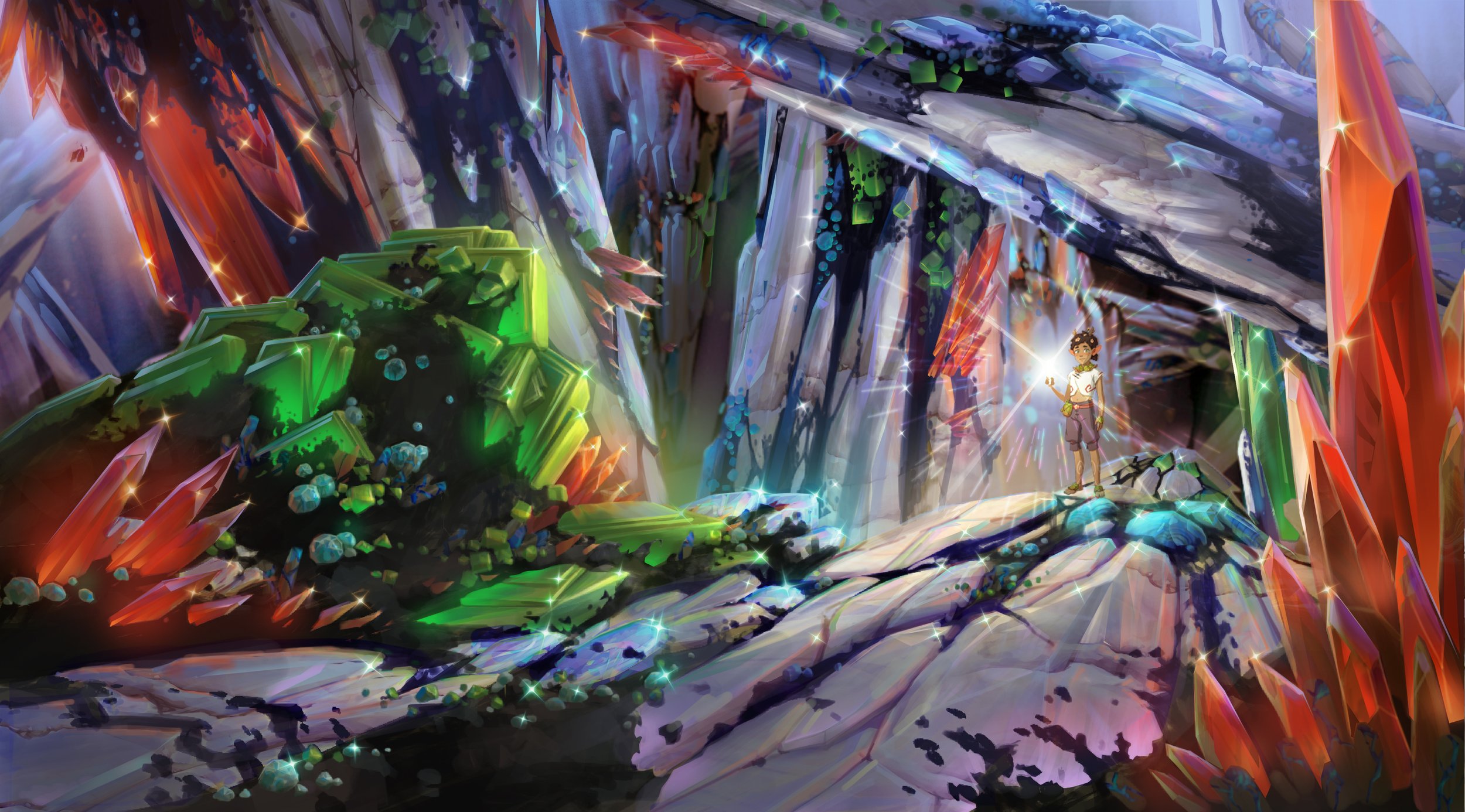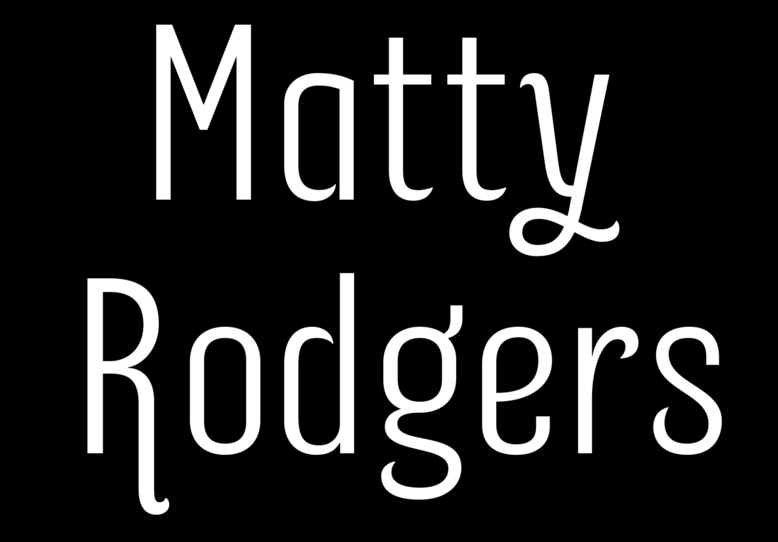
Case Study: “Umber Tor Crystal Labyrinth”
Season 5 of The Dragon Prince featured a lenghty descent into a subterranean kingdom. The challenge was to create exciting magical zones with distinct visual identities, and avoid boring, repetitive rocky tunnels.
One such area was the Crystal Labyrinth. While the script, and even the name itself, gave a good starting point, in a fantasy show like this the design was wide open for interpretation. Here you can some of the steps Matty took to tackle this interesting design challenge, and to prepare it for asset build.
Rough Concepts
For the first exploration it’s always important to give some different looks. You don’t cover much design ground if your options are just 3 different levels of scale and complexity of the same basic idea.
It’s also really important to think about production friendly builds. Even if a show has a large budget, being efficient in one place will free up resources to do bigger and better things elsewhere. So it’s always worth presenting a cost savvy option.
At this point the focus is on the idea exploration so the sketches are reasonably simple drawings
First rough concept pass- Option A - Natural and Chaotic feel
First rough concept pass- Option B - Formal, organised style (production friendly for scope and re-useability)
First rough concept pass- Option C - High fantasy magical feel
3D Blockin
Now that a general direction had been chosen by the directors/showrunners, it was time to start problem solving how to actually create a workable asset.
The goal of the set was for it to feel like a ‘labyrinth’ - very complex, confusing and chaotic. Combined with detailed rock and crystal components, that was a recipe for a heavy build. I immediately started to design a modular kit in 3D that could be instanced to build out the look and function the sequence needed, but in a more achievable way.
Once I had a workable solution I had the ability to add some basic lighting and frame some potential shots and camera moves. This way the Directors and Showrunners could give their input on the layout and scale before moving ahead.
Colour Design
With the help of the 3D blockin, the layout, scale and modular kit set were approved. It was time for me to zoom in and design some extra details and additional elements that still needed resolving.
At this point materials and local colours needed to be addressed as they went hand in hand with the more specific design pieces - for example the various types of crystals the characters would interact with. Additionally the set lighting needed to be designed.
Model Sheets
Once the design is approved in colour and with all necessary details, it’s time to make model sheets. These are all the information that the assets team will need to take the proxy model and work it up into a finished set.
The Dragon Prince was all made in-house at Bardel, so the process was more forgiving than in an outsource situation. However good model sheets are still a vital part of the process.










